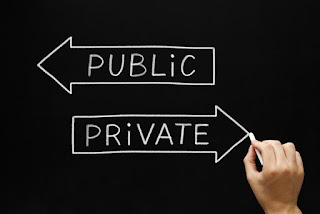Private vs. Public vs. Public vs. Public
During a conversation yesterday with a veteran fleet manager friend I was reminded that there are many differences in what various fleets do, and how we achieve very different goals in many cases. So with a broad view, I thought I would throw this out for comments.
Private fleets generally have two concerns, safety and financial impact. Reporting structures can vary, level of emphasis on profit versus safety is flexible in the private sector, but these are really the two primary focal points for a private sector fleet manager.
Public fleets (in my opinion) on the other hand have much more variation in their governance, priorities, and authority based on type and makeup of the organization and their leadership. My friend works at the county level, and his elected leadership has different priorities than state level agencies which operate under legislative authority.
Most county and municipal fleets managers have a greater level of latitude when it comes to procurement as well. Local and county agencies generally can utilize cooperative purchasing agreements or share state contracting opportunities whereas most state and federal level agencies I have known have much more restrictive statutes regarding procurement.
Additional differences can be identified based on the type of fleet operation being discussed. DOT fleet operations may be very different from public safety fleets in both the makeup of the assets and the priorities. The widely varied needs of each type of agency fleet serve very different purposes and must be prioritized based on multiple, sometimes conflicting, factors.
I think of the changes that occur when newly elected or appointed officials take over and their plans are significantly different than those of their predecessor. One of the greatest examples I recall was a conversation with a peer who operated one of the largest municipal fleets in the nation. He was telling how after years of "greening" the fleet and implementing alternative fuels technology everything suddenly changed. The newly elected leadership had attended a national convention and was picked up at the airport in a large SUV. Upon returning from his travels the official summoned my friend to his office and gave him a non-negotiable mandate to immediately begin upgrading the fleet to "more suitable" vehicles for additional space and cargo capacity.
While some may believe that the gap between public and private sector management isn't so wide, it is my experience that they are quite different. Perhaps perceptions are deceiving, but public sector management depends on leadership's perception of the public perception, and that seems to makes multiple layers of moving targets.
Comments welcome.
Private fleets generally have two concerns, safety and financial impact. Reporting structures can vary, level of emphasis on profit versus safety is flexible in the private sector, but these are really the two primary focal points for a private sector fleet manager.
Public fleets (in my opinion) on the other hand have much more variation in their governance, priorities, and authority based on type and makeup of the organization and their leadership. My friend works at the county level, and his elected leadership has different priorities than state level agencies which operate under legislative authority.
Most county and municipal fleets managers have a greater level of latitude when it comes to procurement as well. Local and county agencies generally can utilize cooperative purchasing agreements or share state contracting opportunities whereas most state and federal level agencies I have known have much more restrictive statutes regarding procurement.
Additional differences can be identified based on the type of fleet operation being discussed. DOT fleet operations may be very different from public safety fleets in both the makeup of the assets and the priorities. The widely varied needs of each type of agency fleet serve very different purposes and must be prioritized based on multiple, sometimes conflicting, factors.
I think of the changes that occur when newly elected or appointed officials take over and their plans are significantly different than those of their predecessor. One of the greatest examples I recall was a conversation with a peer who operated one of the largest municipal fleets in the nation. He was telling how after years of "greening" the fleet and implementing alternative fuels technology everything suddenly changed. The newly elected leadership had attended a national convention and was picked up at the airport in a large SUV. Upon returning from his travels the official summoned my friend to his office and gave him a non-negotiable mandate to immediately begin upgrading the fleet to "more suitable" vehicles for additional space and cargo capacity.
While some may believe that the gap between public and private sector management isn't so wide, it is my experience that they are quite different. Perhaps perceptions are deceiving, but public sector management depends on leadership's perception of the public perception, and that seems to makes multiple layers of moving targets.
Comments welcome.

Comments